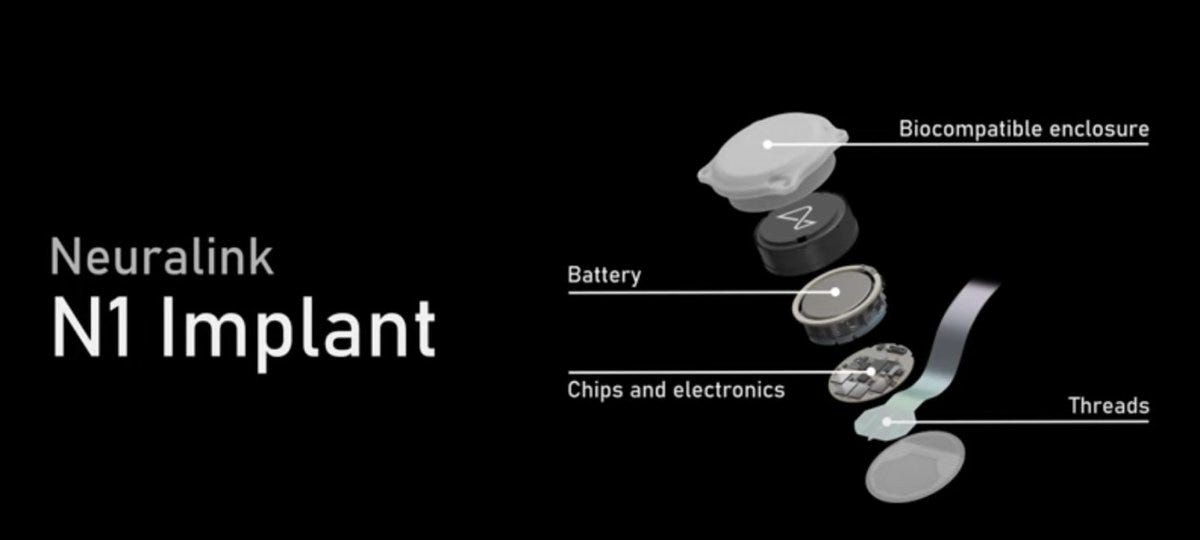Why Neuralink is the most important company this decade
Neuralink is delivering life-changing value to humanity and is at an inflection point as goes from being a technology in the lab to people’s homes this year. As an investor, we look for transformative innovations — where technology redefines our understanding of what’s possible. Neuralink is not just that life-changing innovation but will deliver uncapped upside potential from here.
#1 Where are we today?
Over the past century, the Brain Machine Interface (BMI) space has evolved from early breakthroughs such as the introduction of electroencephalography (EEG) in 1924 to groundbreaking animal trials like monkeys playing Pong in 2021. This year Neuralink’s N1 implant was successfully implanted in multiple humans residing in their homes.
This is a breakthrough for people with quadriplegia, restoring autonomy by converting neural signals from the motor cortex into digital commands. This allows users to engage with the digital world (move cursors and type through thought alone), communicate via text, email, speech and engage with creative outlets like art and music - ultimately delivering life changing human value.
Noland Arbaugh, the first participant in Neuralink’s clinical trial, now plays video games, live streams, and navigates his laptop—all through the power of his mind. Similarly, Alex, another participant, is designing complex 3D objects using CAD software, unlocking creative potential once thought inaccessible. These stories are not isolated; they are the first chapters in a revolution to restore independence to millions globally. Reviews from Noland Arbaugh, Neuralink’s first participant:
“(Neuralink) has helped me reconnect with the world, my friends, and my family. It's given me the ability to do things on my own again without needing my family at all hours of the day and night.”
“The biggest thing with comfort is that I can lie in my bed and use (Neuralink). Any other assistive technology had to have someone else help or have me sit up. Sitting causes stress mentally and on my body which would give me pressure sores or spasms. It lets me live on my own time, not needing to have someone adjust me, etc. throughout the day.”
“I think it should give a lot of people a lot of hope for what this thing can do for them”
#2 How does it work?
The N1 is the size of a coin, containing a microprocessor, Bluetooth transmitter, rechargeable battery, and ultra-thin wires with 1,024 electrodes distributed across 64 threads. These highly-flexible, ultra-thin threads are key to minimize damage during implantation. The threads of our implant are so fine that they can't be inserted by the human hand. A surgical robot has been designed to reliably and efficiently insert these threads exactly where they need to be.
Once inserted, the electrodes detect neural signals and translate them into digital commands, transmitted via Bluetooth to external devices. Thinking about moving a cursor triggers corresponding neurons in the motor cortex, enabling precise cursor movement on a screen.
#3 Why Now?
This year Neuralink’s patients achieved bandwidth that’s ~50% of a normal human via the N1 implant. It’s poised to meet human level bandwidth next year and the team aims to exceed it by the end of the decade. A quick breakdown on why bandwidth matters. Today’s intelligence operates on three levels:
Limbic Intelligence (“thinking fast” – primal needs like safety and survival)
Higher-Order Reasoning (“thinking slow” – complex thought and planning)
Digital Intelligence (enabled by phones, internet, software)
Our reliance on digital intelligence is undeniable. Forgetting your phone feels like losing a limb. Yet, the bottleneck lies in the bandwidth—the rate at which information flows between biology and technology. Bandwidth is quantified in Bits Per Second (BPS), as popularized by the late Professor Krishna Shenoy:
Average human output (no devices): 1 BPS
Typing/speaking: ~20 BPS
Peak human performance: ~40 BPS
With BMIs (Brain-Machine Interfaces):
2017: Achieved ~2-4 BPS
2021: Reached 6.56 BPS
2024: Neuralink’s N1 reached 9.5 BPS
2025: Neuralink targets 40 BPS
By 2030: Neuralink targets 100 BPS (edit: Elon forecasts 1Mbps of bit rate and >1M humans by 2030)
The advances next year will likely come from two main levers: 1) More electrodes (going from 1024 to 3000) and increased utilization of electrodes (currently N1 utilizes ~10% of the 1024 electrodes and is expected to go as high as 40% next year). Achieving near-human bandwidth will help dramatically improve the quality of life for people with special abilities.
#4 What's next?
Scaling N1: Neuralink aims for 27 procedures in 2025 and 79 in 2026, expanding the number of users.
Vision Restoration: FDA-approved BMI for vision restoration (“Blindsight”) interacts with the visual cortex to restore basic light and shape perception.
Speech Restoration: Expanding to auditory cortex applications to restore speech capabilities.
Beyond Restoration: BMIs could replace smartphones. BMIs could surpass traditional devices, becoming high-bandwidth interfaces for AI-human interaction. They could enhance human cognition, memory, and productivity for 100M+ users
From restoring autonomy for quadriplegics to enhancing human potential, Neuralink will revolutionize how we interact with machines, each other, and the world. It’s not just about catching up to technology, but about defining the next frontier for humanity!
Thanks to Cobi Blumenfeld-Gantz and Shreya Bhargava for their inputs on this article.





It’s really cool
Excellent summary of Neuralink’s progress and potential to fundamentally change our world. Thanks for sharing.